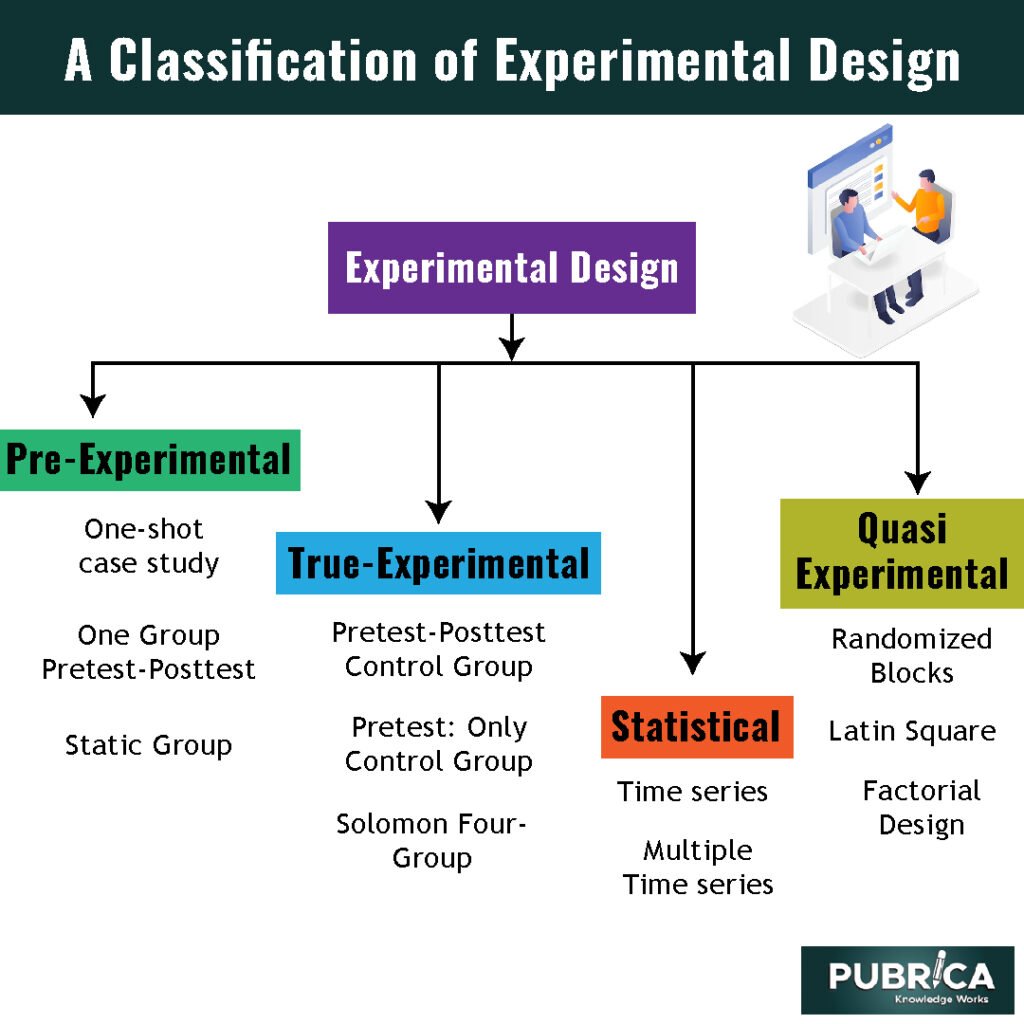
The CARE guidelines: developing clinical case reporting recommendations based on consensus
February 25, 2022
Case Study of the Biotechnology Industry in Medicine
March 3, 2022Experimental Design
Experimental design is the process of researching in an objective and controlled manner to optimize precision and reach particular conclusions about a hypothesis statement. The goal is to determine the effect a factor or independent variable has on a dependent variable.
Experimental Research
Experimental research is a type of scientific examination in which one or more independent variables are changed and then applied to one or more dependent variables to see how they affect the latter. The effect of independent variables on dependent variables is frequently observed and recorded over time to help researchers reach a plausible conclusion about the link between these two types of variables. The experimental research approach is frequently employed in the physical and social sciences, psychology, and education. It is based on a simple logic that compares two or more groups, but it can be challenging to implement. Experimental research designs, most commonly associated with laboratory test procedures, entail gathering quantitative data and doing statistical analysis on it during the study process.
Experimental Research Design in Following:
- Time is a critical aspect in establishing a cause-and-effect link.
- Cause-and-effect behaviour that is consistent.
- You want to comprehend the significance of cause and effect.
Types of experimental design
The types of experimental study designs are into three types as Pre-experimental, quasi-experimental, and real experimental.

1. Pre-experimental study design: After incorporating cause and effect elements, a group, or many groups, is kept under observation. You’ll perform this inquiry to see if additional research is required for these specific groups.
Pre-experimental research can be divided into three categories:
- Case Study Research Design in a Single Session:
Only one dependent group or variable is investigated in this experimental study. It’s post-test research since it’s done after some treatment that’s supposed to induce change.
- One-group Pre- and post-testing was used in the research:
By administering a test to a single group before and after treatment, this research design incorporates post-test and pretest studies. The former is given at the start of treatment, while the latter is given at the end.
- Comparison of static groups:
In a static-group comparison study, two or more groups are observed, with only one of the groups receiving treatment while the other groups remain unchanged. All groups are retested after the therapy, and the observed differences between them are presumed to be due to the treatment.
2. True Experimental research design:
True experimental research is the maximum accurate type of study because it depends on biostatistical analysis to prove or reject a concept. Only a simple design, out of all the types of experimental design, can demonstrate a cause-and-effect link inside a group. In an actual experiment, three conditions must be met:
- Control Group that will not be affected by the modifications, and an Experimental Group that will be exposed to the altered variables.
- The researcher has control over that a variable.
- The distribution is random.
3. Quasi-experimental Research Design:
“Quasi” indicates “partial,” “half,” or “false.” As a result, while quasi-experimental research resembles actual experimental studies, it is not the same. Participants in quasi-experiments are not assigned at random, and as a result, they are employed in situations where randomization is problematic or impossible. This is a typical occurrence in educational research, where administrators refuse to allow students to be chosen at random for experimental samples. The time series, no corresponding control group design, and the counterbalanced design are quasi-experimental research designs.
What Is the Purpose of Experimental Research Design?
The experimental study design benefits physical disciplines, social sciences, education, and psychology. It’s utilized to make predictions and come to conclusions about a topic.
The following are some examples of how experimental research design can be used.
Medicine: Experimental research is utilized to develop effective disease treatments. Rather than directly employing patients as research subjects, researchers typically extract a bacteria sample from the patient’s body, which is then treated with the newly created antibiotic.
Education:
It can be used to improve the standard of an academic institution and science topics like Chemistry and Physics, which include teaching students how to do experimental research. This includes assessing students’ understanding of various topics, developing more effective teaching methods, and implementing additional programmes to help pupils learn.
Human behaviour:
Social scientists are the ones who employ experimental studies to investigate the most. Consider two people who were chosen at random to be the subjects of a social interaction study in which one person was placed in a room with no human interaction for a year.
About Pubrica:
Our team of researchers at Pubrica has a wide range of experience and expertise in developing various research studies based on the goals. We employ the randomized clinical trial in research of screening tests, diagnostics, preventive, and therapeutic intervention. However, there are numerous situations where using the experimental design is impractical or impossible, premature, or unethical. As a result, many quasi-experimental designs and descriptive and observational designs have been developed.
